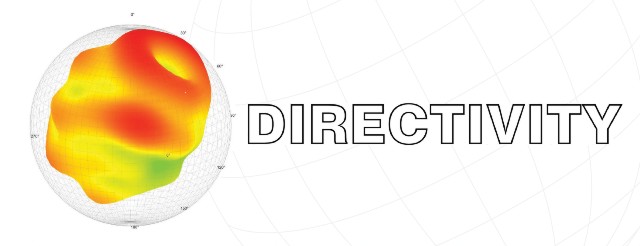Viola Directivity
Document Type
Musical Instrument Directivity
Publication Date
11-2019
Abstract
The directivity function of a played musical instrument describes the angular dependence of its acoustic radiation and diffraction about the instrument, musician, and musician’s chair. Directivity influences sound in rehearsal, performance, and recording environments and signals in audio systems. Because high-resolution, spherically comprehensive measurements of played musical instruments have been unavailable in the past, the authors have undertaken research to produce and share such data for studies of musical instruments, simulations of acoustical environments, optimizations of microphone placements, and other applications. The authors acquired the data from repeated chromatic scales produced by a viola played at mezzo-forte in an anechoic chamber. The musician sat on a computer-controlled subject-rotation chair with the instrument in a regular position. The chair height and horizontal displacement ensured that the geometric center of the instrument’s radiating region fell at the circular center of a 1.8 m-radius semi-circular array of 37 microphones positioned at Δ𝜃 = 5° polar-angle increments. The musician initially faced toward ϕ = 0° in the azimuthal angle. Azimuthal rotations progressed in Δϕ = 5° increments, such that the measurements involved 2,522 unique positions over a sphere. Additional measurements at three positions within the rotating reference frame facilitated post-processing. Several steps mitigated the effects of repeated scale variations, including laser-based instrument alignments and calculations of transfer functions, effective coherent output spectra, and other quantities. The results are available under Additional Files and may receive periodic updates.
Recommended Citation
S. D. Bellows, K. J. Bodon, and T. W. Leishman, “Viola Directivity,” Brigham Young University, ScholarsArchive, Directivity. 4 (2019). Directivity. 4. https://scholarsarchive.byu.edu/directivity/4


Comments
While higher resolutions may also result from the raw measurement data, the files presented here fall in 1/3-octave bands. They derive from degree N = 15 spherical harmonic expansions employing coefficients from Chebyshev quadrature. Resampled continuous expansions realigned the frontal axis at 𝜃 = 0° and ϕ = 0° for the files. The poles rotated by 90° so that the original zenith falls at (𝜃, ϕ) = (90°, 0°) and the original nadir falls at (𝜃, ϕ) = (90°, 180°).
The recommended Common Instrument Format (CIF) file opens using the CLF Group CIF viewer, currently available at http://www.clfgroup.org/cif.htm. For other file formats, contact the authors at directivity@byu.edu. The MP4 file animates the directivity balloons rotating 360° for each 1/3-octave band within the original coordinate system.
These data should be helpful for many applications and are available for general usage. The authors request that users cite the work as given under Recommended Citation.